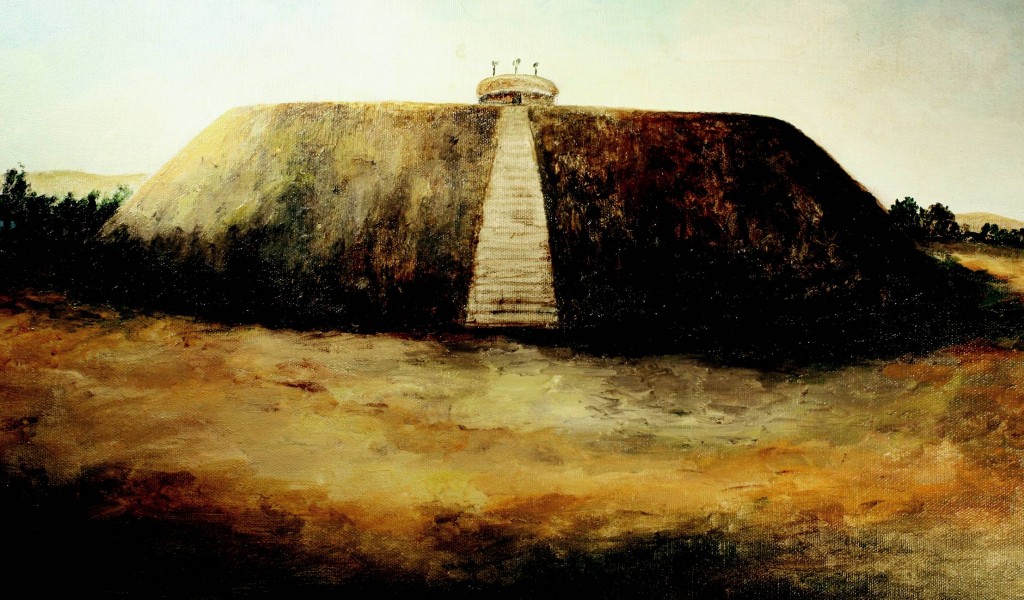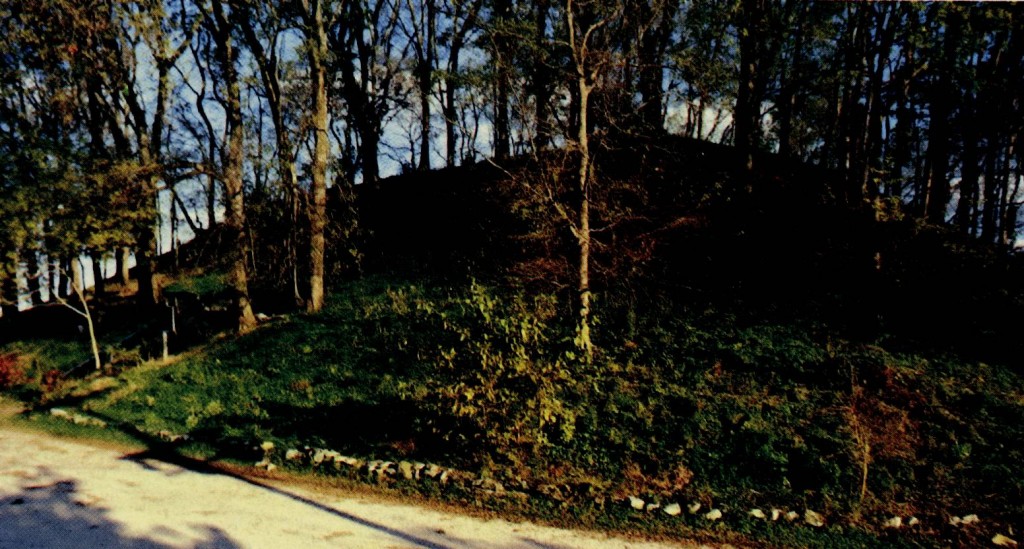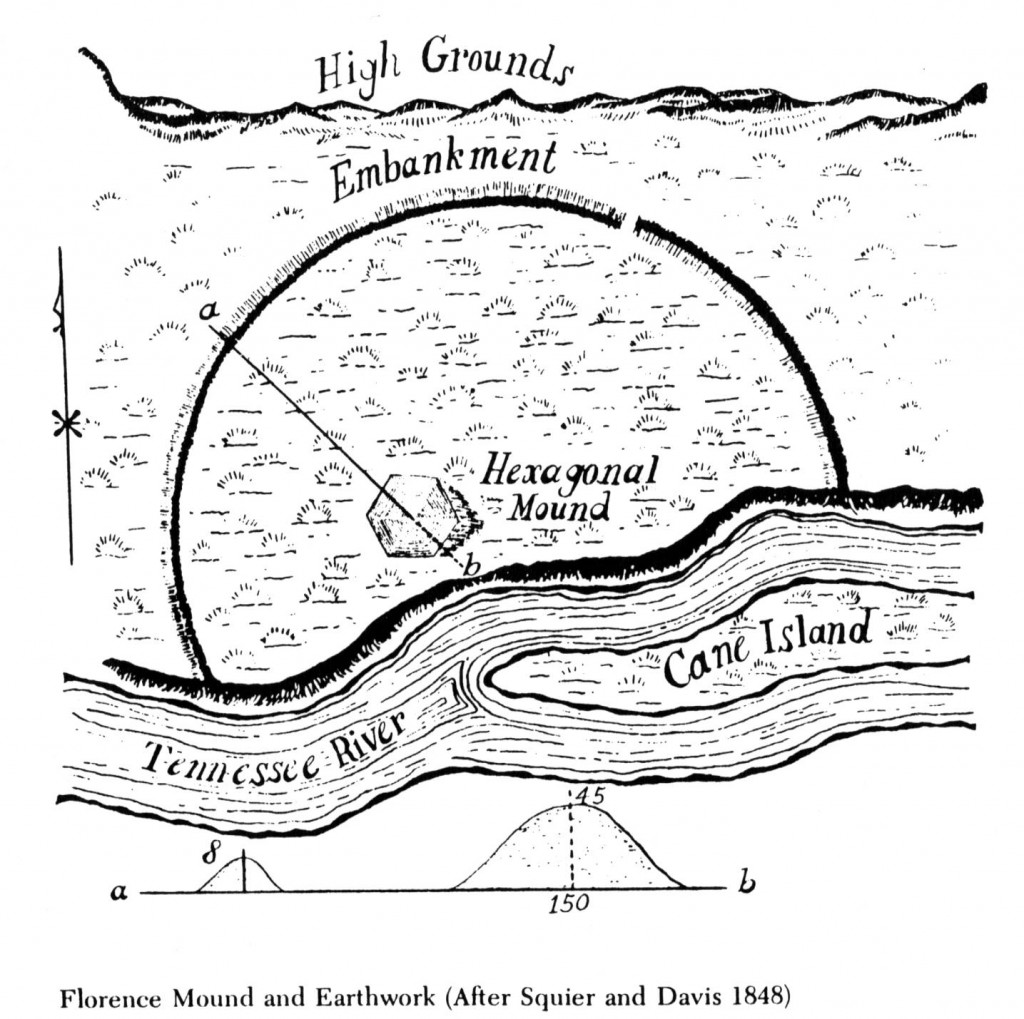James B. Griffin has characterized the fourth millennium B.P. as a period of considerable population growth, clear regional adaptations, and inter-regional exchange (Walthall 980). This last trait included trade of raw materials and finished products as well as diffusion of stylistic concepts and ideology. This interaction appears to have reached a peak or climax from about 3,500 to 2,500 B.P.
The most striking manifestation of interaction appears in certain burial “cults” or “cultures” in the Midwest and Northeast. The major burial complexes of this northern interaction sphere include Meadowood culture to the east and the Red Ocher burial complex of the western Great Lakes and upper Mississippi Valley. Walthall ( 980) also associates the Glacial Kame and Old Copper culture of the Great Lakes region with these complexes. For comparative purposes, it is possible to delineate a burial complex developed during the terminal Archaic. It was represented by a certain shell mound burial phase in the western middle Tennessee Valley. These burials and their associations constitute a mortuary tradition that can be termed the “Pickwick Burial complex.”
In applying this term to these burials, it is recognized that (1) the major traits of this complex are centered in the Pickwick Basin area of the Tennessee Valley, and (2) this mortuary tradition spans a period encompassing both late Lauderdale and Bluff Creek phases and perhaps extends into Alexander times as well. Burials relating to the Pickwick complex were usually flexed on the side or in a sitting position. They were placed into pits dug into the shell mounds or into nearby sand beach deposits. Cremation was also practiced and some individuals were decapitated (perhaps postmortem) before burial. Mortuary offerings generally accompanied only a small percentage of individuals. For example, at the Long Branch shell mound (ILU67) only 7 of the 68 late Archaic burials contained grave goods (Webb and DeJarnette 942).
Children and infants, however, were usually buried with mortuary offerings. This practice, combined with the limited number of adults of both sexes were buried with mortuary goods. This may reflect emerging concepts of status among these semi-sedentary groups. These concepts may be the product of interaction with complementary populations on a higher cultural level. Jon Gibson believes he has evidence that the Poverty Point and related peoples of the lower Mississippi Valley were reaching a chiefdom level of sociopolitical organization. Certain distinctive traits in the material cultures of the Poverty Point ethnic group and the Pickwick peoples suggest exchange and interaction between these cultures.
Examples include the presence of Wheeler and Alexander ceramics, steatite vessels, effigy beads, red jasper beads, Motley projectile points, and tubular stone pipes. Diagnostic Poverty Point effigy beads have been recovered both in the Pickwick Basin and in the upper Tombigbee drainage area of Lamar County (Jolly 97 ) as well as the Kentucky Lake Basin. Burial goods found in Pickwick Burial complex association include both of the functional categories defined by Howard Winters in his study of the Indian cultural burials. These include utilitarian items (projectile points, bone and antler tools, stone vessels, Wheeler ceramic vessels, etc.), and items of a ceremonial nature (human skull bowls and awls, cut animal jaws, etc.) (Walthall 980).
The mortuary goods recovered in Pickwick burials can also be divided into two categories according to source area: (1) items made from locally available raw materials such as bone, antler, and indigenous lithic materials, and (2) materials that reflect trade with ethnic groups in other areas. It appears that objects of this type were most often exchanged as finished products. These artifacts include steatite containers and tubular pipes that have been quarried from the Hillabee schist deposits of the Piedmont area in east central Alabama. Extensive soapstone quarries have been reported in this area. Objects of steatite are more numerous in the Guntersville Basin area and may have been directly procured from the source areas by these people and then traded downstream to the Pickwick peoples. Some Pickwick burials were accompanied only by strings of red jasper and shell beads. The jasper beads were carefully drilled and polished and vary in length from .6 to 2.25 inches, averaging 0.25 inches in diameter. Other mortuary goods reflect long distance trade such as copper beads and perhaps flint blades from the Great Lakes region. Caches of triangular flint blades similar to those reported in the northern burial complexes have been found in Pickwick burials.Some of these may have been exotic (non-local) materials. The late Archaic Phase leads us into the Gulf Formation Phase of the early Woodland Cultural Period.

This Shoal Creek Point is made of heat treated Horse Creek chert. Tennessee Valley Region
Explanatory Comments
A number of artifacts found in the Poverty Point area of Louisiana are made of Horse Creek or Pickwick tri-colored chert.This material was probably traded from sources in the Tennessee Valley (Webb,1939). Some Choctaws from the Poverty Point area today refer to this chert as “Snake Rock.”




